AIDA64:
This is a new benchmarking suite that we have started to use. It covers 9 different benchmarks for just the processor. All of the sub-benchmark descriptions are taken directly from AIDA64′s website.
CPU Queen Benchmark:
This simple integer benchmark focuses on the branch prediction capabilities and the false prediction penalties of the CPU. It finds the solutions for the classic “Queens problem” on a 10 by 10 sized chessboard. At the same clock speed theoretically the processor with the shorter pipeline and smaller false prediction penalties will attain higher benchmark scores. For example — with hyper-threading disabled — the Intel Northwood core processors get higher scores than the Intel Prescott core based ones due to the 20-step vs 31-step long pipeline. CPU Queen test uses integer MMX, SSE2 and SSSE3 optimizations.
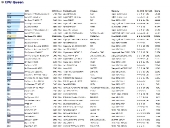 |
We can see that the CPU managed to place above all the other quad cores that don’t have hyper threading. It even managed to beat the 6-core Phenom II.
CPU PhotoWorxx Benchmark:
This benchmark performs different common tasks used during digital photo processing.
It performs the following tasks on a very large RGB image:
- Fill
- Flip
- Rotate 90 degrees CW
- Rotate 90 degrees CCW
- Fill the image with random colored pixels
- Color to black & white conversion
- Difference
- Crop
This benchmark stresses the integer arithmetic and multiplication execution units of the CPU and also the memory subsystem. Due to the fact that this test performs high memory read/write traffic, it cannot effectively scale in situations where more than 2 processing threads are used. For example, on a 8-way Pentium III Xeon system the 8 processing threads will be “fighting” over the memory, creating a serious bottleneck that would lead to as low scores as a 2-way or 4-way similar processor based system could achieve. CPU PhotoWorxx test uses only the basic x86 instructions, and it is hyper-threading, multi-processor (SMP) and multi-core (CMP) aware.
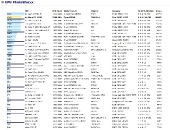 |
The system handles this benchmark quite well, coming second place overall.
CPU Zlib Benchmark:
This integer benchmark measures combined CPU and memory subsystem performance through the public ZLib compression library. CPU ZLib test uses only the basic x86 instructions, and it is HyperThreading, multi-processor (SMP) and multi-core (CMP) aware.
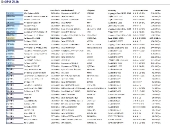 |
The lack of more than 4 cores (virtual or physical) is what keeps the system from scoring much higher. It does still place very high though.
CPU AES Benchmark:
This benchmark measures CPU performance using AES (Advanced Encryption Standard) data encryption. In cryptography AES is a symmetric-key encryption standard. AES is used in several compression tools today, like 7z, RAR, WinZip, and also in disk encryption solutions like BitLocker, FileVault (Mac OS X), TrueCrypt.
CPU AES test uses only the basic x86 instructions, and it’s hardware accelerated on VIA PadLock Security Engine capable VIA C3, VIA C7 and VIA Nano processors; and on Intel AES-NI instruction set extension capable processors. The test is hyper-threading, multi-processor (SMP) and multi-core (CMP) aware.
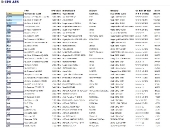 |
Here we see the enhanced AES instructions at work again. The E3-1220 utterly decimates all the other CPUs.
CPU Hash Benchmark:
This benchmark measures CPU performance using the SHA1 hashing algorithm defined in the Federal Information Processing Standards Publication 180-3. The code behind this benchmark method is written in Assembly, and it is optimized for every popular AMD, Intel and VIA processor core variants by utilizing the appropriate MMX, MMX+/SSE, SSE2, SSSE3, or AVX instruction set extension. CPU Hash benchmark is hardware accelerated on VIA PadLock Security Engine capable VIA C7 and VIA Nano processors.
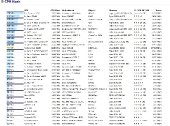 |
The CPU doesn’t do as well in this test as in the others, but still pulls a pretty good score.
FPU VP8 Benchmark:
This benchmark measures video compression performance using the Google VP8 (WebM) video codec Version 0.9.5 (http://www.webmproject.org). FPU VP8 test encodes 1280×720 pixel (“HD ready”) resolution video frames in 1-pass mode at 8192 kbps bitrate with best quality settings. The content of the frames are generated by the FPU Julia fractal module. The code behind this benchmark method utilizes the appropriate MMX, SSE2 or SSSE3 instruction set extension, and it is hyper-threading, multi-processor (SMP) and multi-core (CMP) aware.
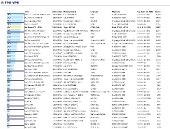 |
The system handles this transcoding benchmark quite well. This is no doubt due to the improvements that Intel has made in creating the Sandy Bridge line.
FPU Julia Benchmark:
This benchmark measures the single precision (also known as 32-bit) floating-point performance through the computation of several frames of the popular “Julia” fractal. The code behind this benchmark method is written in Assembly, and it is extremely optimized for every popular AMD, Intel and VIA processor core variants by utilizing the appropriate MMX, MMX+/SSE, SSE2, SSSE3, or AVX instruction set extension. FPU Julia test is hyper-threading, multi-processor (SMP) and multi-core (CMP) aware.
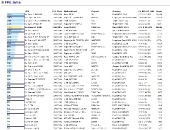 |
The system manages to come in just shy of beating the 8 core Xeon with Hyper Threading.
FPU Mandel Benchmark:
This benchmark measures the double precision (also known as 64-bit) floating-point performance through the computation of several frames of the popular “Mandelbrot” fractal. The code behind this benchmark method is written in Assembly, and it is extremely optimized for every popular AMD, Intel and VIA processor core variants by utilizing the appropriate MMX, MMX+/SSE, SSE2, SSSE3, or AVX instruction set extension. FPU Mandel test is hyper-threading, multi-processor (SMP) and multi-core (CMP) aware.
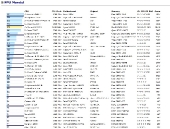 |
The system once again comes just shy of the 8 core Hyper Threaded Xeon. It does still place in the top 5 though.
FPU SinJulia Benchmark:
This benchmark measures the extended precision (also known as 80-bit) floating-point performance through the computation of a single frame of a modified “Julia” fractal. The code behind this benchmark method is written in Assembly, and it is extremely optimized for every popular AMD, Intel and VIA processor core variants by utilizing trigonometric and exponential x87 instructions. FPU SinJulia is hyper-threading, multi-processor (SMP) and multi-core (CMP) aware.
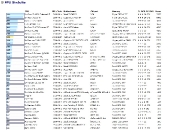 |
The CPU does pretty well in this test, managing to beat out the 6-core Phenom II.
Memory Tests:
Memory bandwidth benchmarks (Memory Read, Memory Write, Memory Copy) measure the maximum achievable memory data transfer bandwidth. The code behind these benchmark methods are written in Assembly and they are extremely optimized for every popular AMD and Intel processor core variants by utilizing the appropriate x86, MMX, 3DNow!, SSE, SSE2 or SSE4.1 instruction set extension.
The Memory Latency benchmark measures the typical delay when the CPU reads data from system memory. Memory latency time means the penalty measured from the issuing of the read command until the data arrives to the integer registers of the CPU.
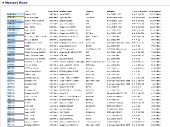 |
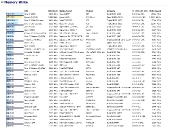 |
||
| Memory Read | Memory Write | ||
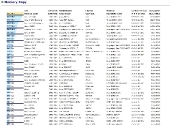 |
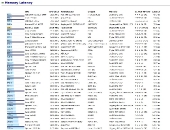 |
||
| Memory Copy | Memory Latency |
In all but one of the tests, the system comes in either the top or second place. The one it falls short in is the latency test, but that isn’t that big of a deal. The other tests more than make up for it.

[…] sits down with the HP Pavilion dv6-6170us Finally, TechwareLabs gets into the TYAN S5510GM3NR Server MotherboardShare and Enjoy:Tags: Bjorn3D, eTeknix, HardwareHeaven, KitGuru, MadShrimps, OverClock Intelligence […]